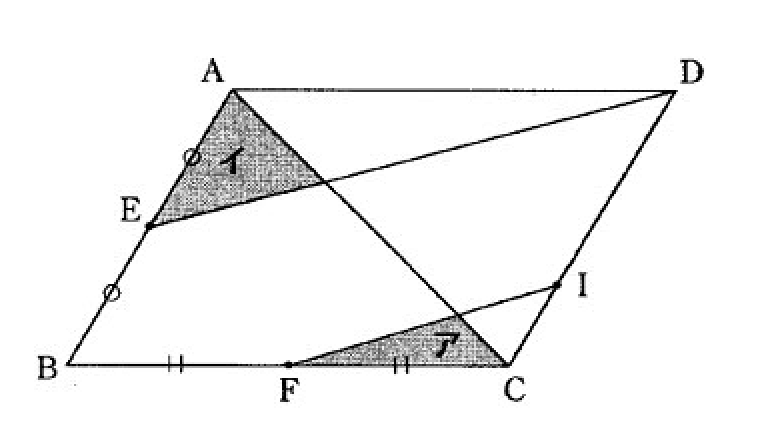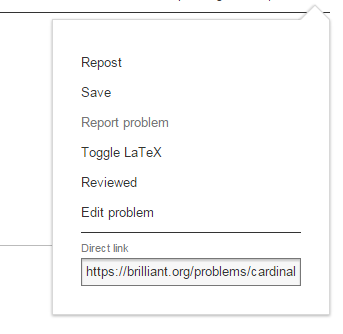Any Parallelogram Will Work Too?

Above shows a parallellogram with and as the midpoints of the straight lines and respectively. And straight lines and are parallel to each other.
If ア is , what's the area of イ?
The answer is 6.
This section requires Javascript.
You are seeing this because something didn't load right. We suggest you, (a) try
refreshing the page, (b) enabling javascript if it is disabled on your browser and,
finally, (c)
loading the
non-javascript version of this page
. We're sorry about the hassle.

Extend each lines E F , D C to meet at G .
E F ∥ A C , E F = 2 1 A C .
Since F I ∥ E D , then I is a midpoint of G D , so F I = 2 1 E D .
E K ∥ F J , E F ∥ K J ⇒ E K = F J .
△ F I C ∼ △ D E A with ratio of similarity of 1 : 2 ,
then I C = 2 1 E A .
△ I C J ∼ △ E A K with ratio of similarity of 1 : 2 .
then I J = 2 1 E K = 2 1 F J , therefore
area of △ I C J = 4 1 area of △ E A K = 2 1 area of △ F C J = 2 3 cm 2
Then, area of △ E A K = 4 ⋅ 2 3 = 6 cm 2 .